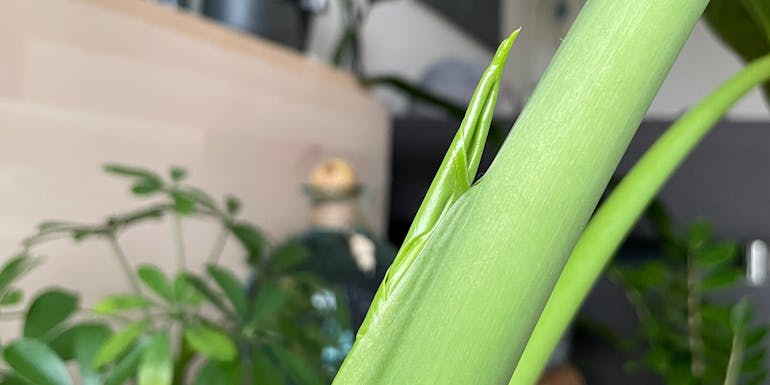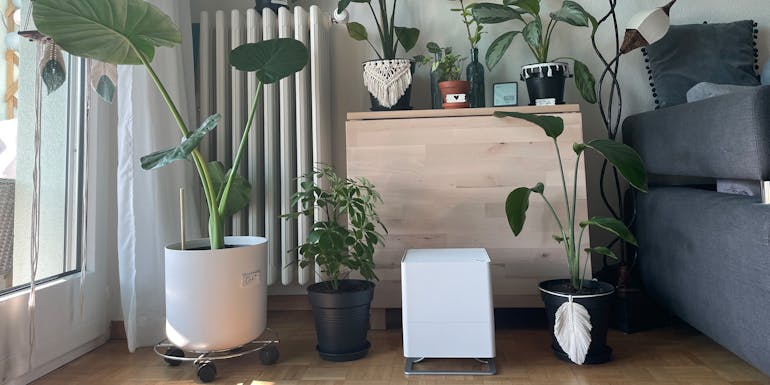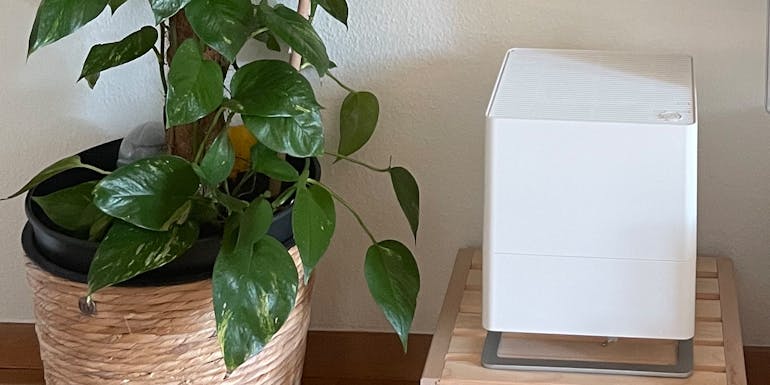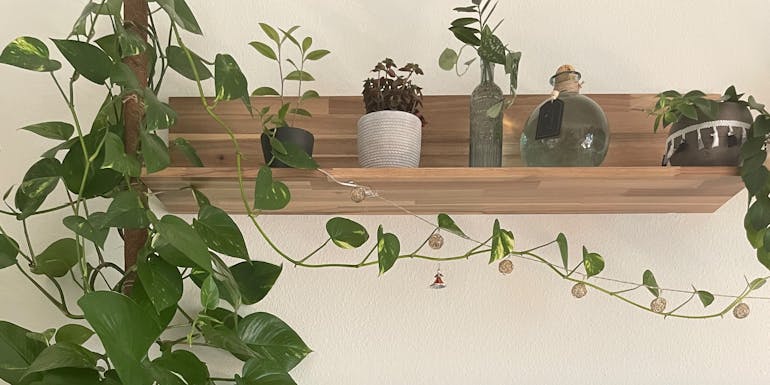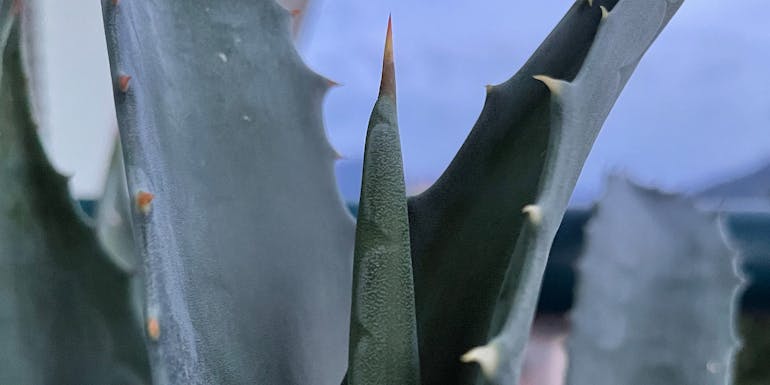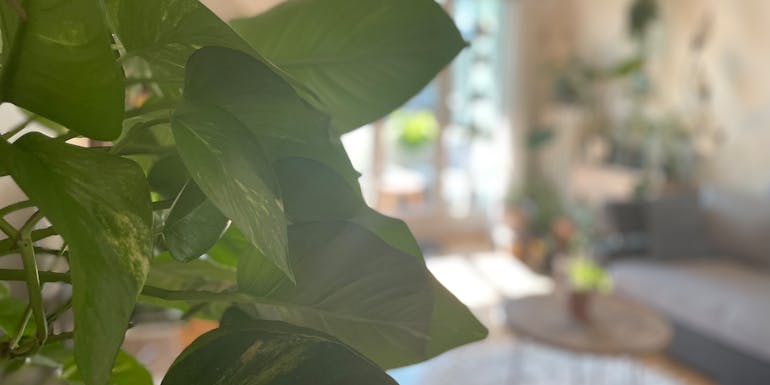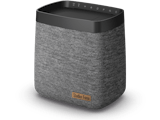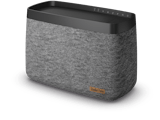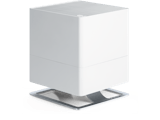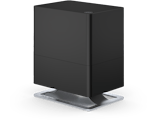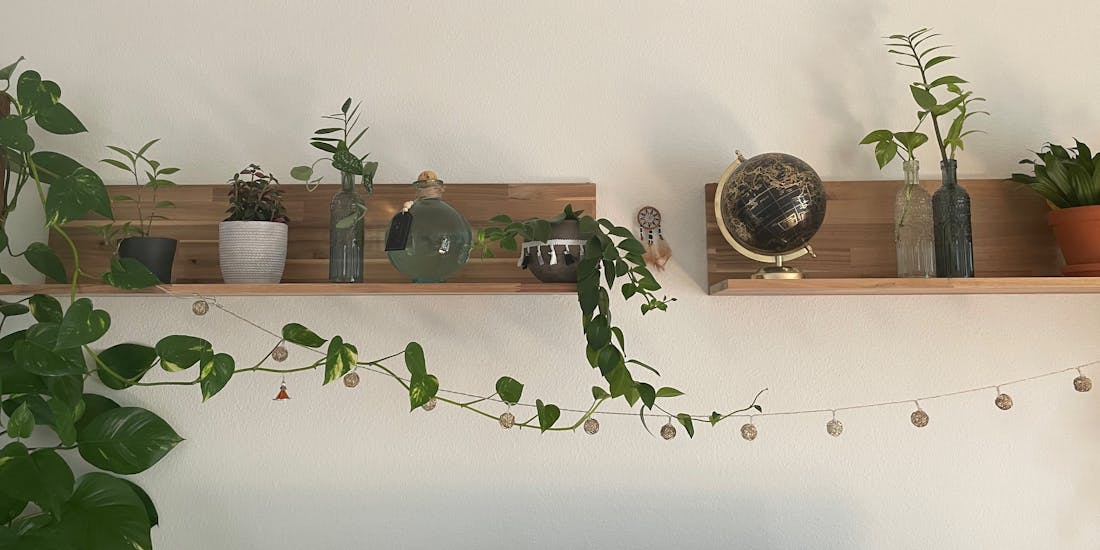
Raphaela Giezendanner, 22 September 2022
Humidify the air
Jungle fever: humidification for plants
Today, whether it’s a big tropical palm in the corner or a colourful little pot plant on the table, it’s hard to imagine a home without houseplants. They bring any living space to life and bring colour into your life. I will give you a few tips and present my secret weapon so that you can make sure your plants survive the cold and dry winter too.
Meet Alfred, Efula Strauss, Dr. Blattnick and Bomi: a few of my pals from my own little jungle of houseplants. Isn’t it wonderful to discover a new leaf bud or a new cutting in a pot every day? But that wasn’t always the case – a few years ago, I used to kill off houseplants. I would come home full of enthusiasm with a new pot plant I had bought and in no time at all, it would just wither. I wanted to put an end to this once and for all and so I decided to do some research on the subject of indoor climate and houseplants.
Now autumn is just around the corner and it’s time to prepare my plants for the dark and dry winter months. That includes moving plants that need light closer to the window and keeping an eye on my hygrometer Selina, for example. After all, I don’t have time to waste as it only takes a few days with low humidity in a room for leaf tips to start drying out, which is not pleasant for me or my plants. That’s because as soon as you start switching the heating on again, the level of humidity drops rapidly – and that’s when I bring out my secret weapon: Oskar the humidifier.
Optimum humidity for plants
It goes without saying that most of you jungle fans already know how important it is to water your plants regularly or make sure that the light conditions and pot size are right – but have you ever given a thought to where your green housemates come from and what climate conditions prevail there?
I find tropical trees and shrubs – with their big, succulent, evergreen leaves – fascinating. My epipremnum aureum, strelitzia tree, philodendron and giant taro all come from subtropical climate zones where the level of humidity is always very high all year round. But how can I create a subtropical climate for my lovely pot plants in my lounge without damaging my house?
There are various ways that you can create an optimum indoor climate for your houseplants. You can spray their leaves regularly with water for one thing, although that can be very time-consuming and will only briefly increase the level of humidity. Therefore you would need to do it several times a day as the moisture on the leaves will evaporate very quickly. Plus, don’t forget that you might be spraying the walls too and the water from the leaves could drip onto your beautiful parquet floor. It should also be noted that you should use filtered water as limescale deposits on the leaves are unsightly and can damage your plants.
A second option is a terrarium which keeps the humidity inside and exactly where it is needed, namely around your plants. However, this solution is limited to the size of the terrarium and what do you do when your plants get too big for it?
Another option is to group your plants together and put a bowl of water in the middle of them. I’m not really a fan of this option though because there are always certain limitations in respect of furniture with measures like this.
The fourth option – which is the one I decided to take – is to purchase a humidifier, an evaporator. It provides optimum humidity – not only for my plants but also for me – and no limescale. A humidifier is very easy to use and makes light work of creating the desired level of humidity. Oskar from Stadler Form operates according to the natural principle of evaporation which means that even with continuous use, there is no need to worry about overhumidification. The water is absorbed by the filters and the dry air is sucked through the filters by a fan, taking on moisture in the process and ultimately distributing it in the room. My plants love my Oskar. He doesn’t take much looking after and is also suitable for hard water. I combine the weekly cleaning of Oskar with watering my plants – job done! The plants are happy, my Oskar is happy and I love the pleasant level of humidity and looking out for new little healthy leaf buds.
Dry air for plants
Have you ever seen leaves with brown and crispy tips on your pot plants? If so, then it’s high time to look at your indoor climate and where your plants come from as brown leaf tips can indicate that the level of humidity indoors is too low. Over a long period of time, dry air can be just as harmful to plants as it is to us. The best way to check your level of humidity is with a hygrometer. I have set up my hygrometer Selina in the middle of my jungle so that I can see at a glance when it’s time to put my Oskar into operation again. I’m already on the alert since it is autumn and soon the level of humidity will drop to a minimum again.
Plants as humidifiers
It is a widespread misconception – or at least only a partial truth – that plants help with dry air and so if you put houseplants in a room, the level of humidity indoors will go up automatically. Naturally, houseplants promote the increase of humidity because the water from the pots evaporates and plants also give off moisture through their leaves. However, that moisture is not usually enough to create a continuous pleasant level of humidity indoors.
Here's an example: the aralia ivy releases 90% of the watering back into the room air. That sounds like a lot, but the aralia ivy only needs a little water in winter. So, if you water it once a week with 3 dl, it releases just 2.7 dl into the room in a week. In comparison, Oskar manages 2-3 dl per hour.
And did you know that there are also plant species that instead of taking on water via their roots, absorb moisture via their leaves, thus doing the opposite of what you wanted them to do in the first place? In addition, some plants actually need a very high level of humidity in order to be able to thrive and be healthy. Additional moisture is essential to create a natural environment for houseplants. As already mentioned, spraying the leaves can help briefly but is time-consuming, not all plants like it and it can also promote the spread of fungal diseases.
Plants have a very long life expectancy so if you know your plants and what they like and take a bit of care over them, you will be able to enjoy your green housemates for many years to come. If you are like me and you like practical solutions, you certainly can’t go wrong with an evaporator for the cold, dry winter months. On the contrary, the lounge jungle will continue to thrive splendidly throughout the winter and while Oskar continues to create the perfect indoor climate, I can get cosy on the sofa with a hot cup of tea.
If you have questions related to indoor room climate, please get in touch with us. Or subscribe to our newsletter to regularly get informed about current topics regarding indoor climate, experience reports or Stadler Form insights.
